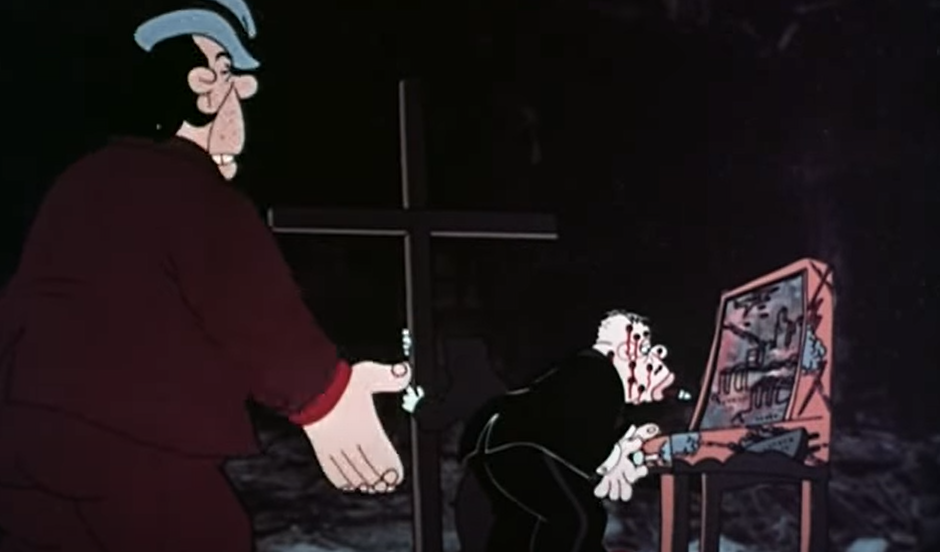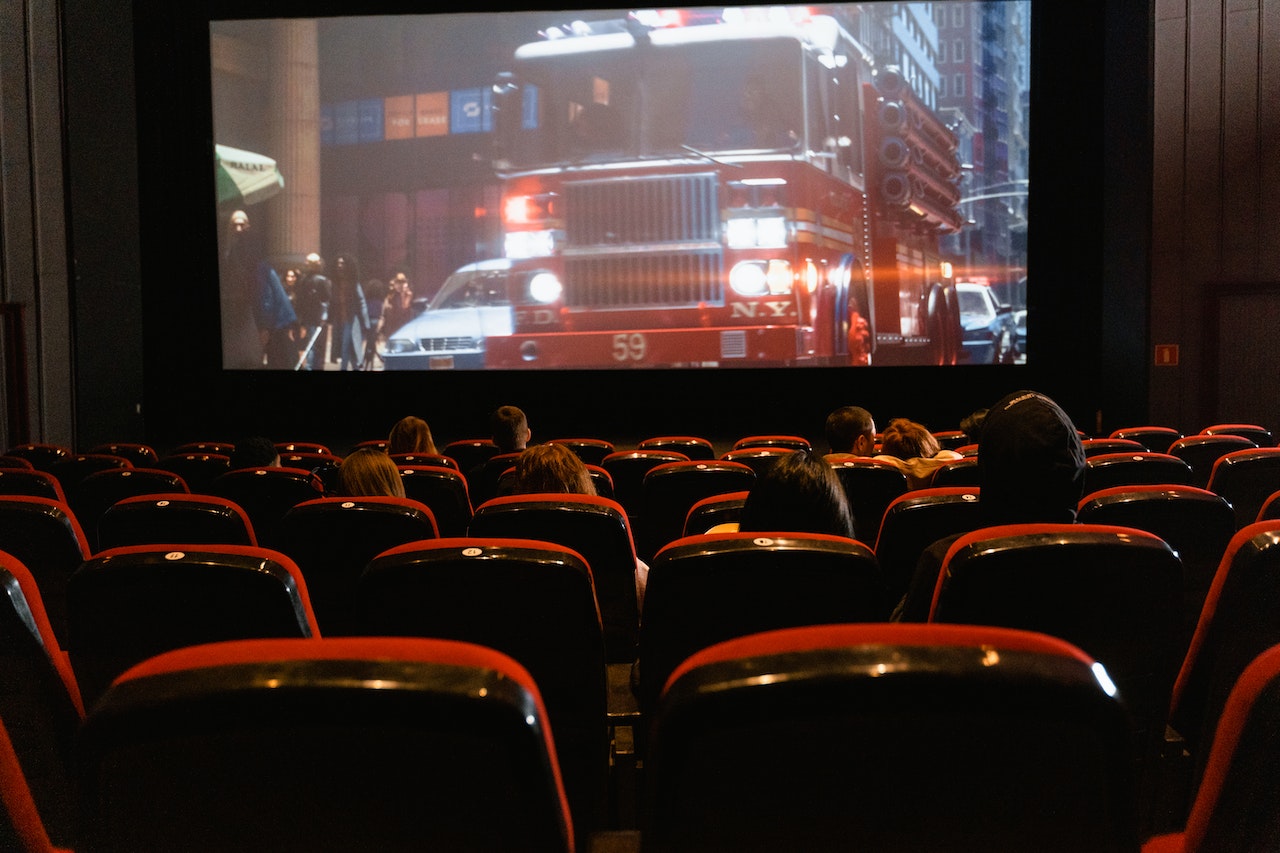The 1970s, often referred to as a period of ‘New Hollywood’, was a dynamic time for the film industry. This era saw a creative revolution, with novel storytelling techniques and narratives challenging the status quo. The realm of animation was no exception. An array of new themes and styles emerged, transforming the landscape of cartoon movies.
Heavy Traffic (1973)
Directed by Ralph Bakshi, “Heavy Traffic” is a groundbreaking animated film that delves into the gritty realities of urban life, offering a unique blend of comic satire and drama. Released in 1973, the movie follows the life of Michael Corleone, an underground cartoonist, as he navigates through the harsh and turbulent world surrounding him. Bakshi’s innovative approach to animation, using a fusion of live-action sequences and traditional animation, adds a sense of rawness and realism that sets the film apart from conventional animated works.
- Bakshi’s Vision: Ralph Bakshi was a visionary director known for pushing the boundaries of animation, and “Heavy Traffic” exemplifies his daring and unconventional style. Unlike mainstream animations of its time, Bakshi’s movie fearlessly tackles controversial topics and explores the seedy underbelly of city life. He aimed to break free from the limitations of traditional animation and embraced a fresh and audacious approach to storytelling;
- Visuals and Artistic Style: “Heavy Traffic” stands out for its visual richness and artistic flair. Bakshi’s innovative use of a unique blend of live-action footage and animation creates a mesmerizing and immersive experience for the audience. This dynamic approach allows the film to seamlessly transition between the gritty reality of the city and the surreal world of Michael’s imagination.
The film’s animation style is characterized by its expressive and vivid depiction of urban landscapes, portraying the city as a living, breathing entity filled with diverse and eccentric characters. Each frame is meticulously crafted, giving the movie an immersive quality that captivates viewers from start to finish.
- Character Development: The film boasts a cast of well-crafted characters, each with their own distinct personalities and dilemmas. At the center of it all is Michael Corleone, a talented but struggling underground cartoonist, superbly portrayed with depth and authenticity. His journey is one of self-discovery and artistic growth, as he grapples with the pressure to conform to societal norms while pursuing his creative aspirations;
- The supporting characters add layers of complexity to the narrative, portraying a cross-section of society, from the quirky and eccentric to the morally corrupt and dangerous. Michael’s relationships with his parents are depicted with emotional nuance, reflecting the complexity of familial dynamics;
- Themes and Controversial Commentary: “Heavy Traffic” fearlessly explores urban life, shedding light on the dark and often taboo aspects of society. The movie delves into themes such as racism, violence, sexuality, and identity. Through its unapologetic portrayal of controversial topics, the film serves as a thought-provoking commentary on the human condition and the struggles faced by those living on the fringes of society.
Table:
| Aspect | Description |
|---|---|
| Director | Ralph Bakshi |
| Release Year | 1973 |
| Running Time | Approximately 77 minutes |
| Animation Style | Unique blend of live-action and traditional animation |
| Visuals | Expressive and vivid depiction of urban landscapes |
| Main Character | Michael Corleone, an underground cartoonist |
| Supporting Characters | Varied and diverse, representing a cross-section of society |
| Themes | Urban life, Controversial topics, Self-discovery, Artistic growth |
| Approach | Daring and unconventional, tackling controversial subjects |
Robin Hood (1973)
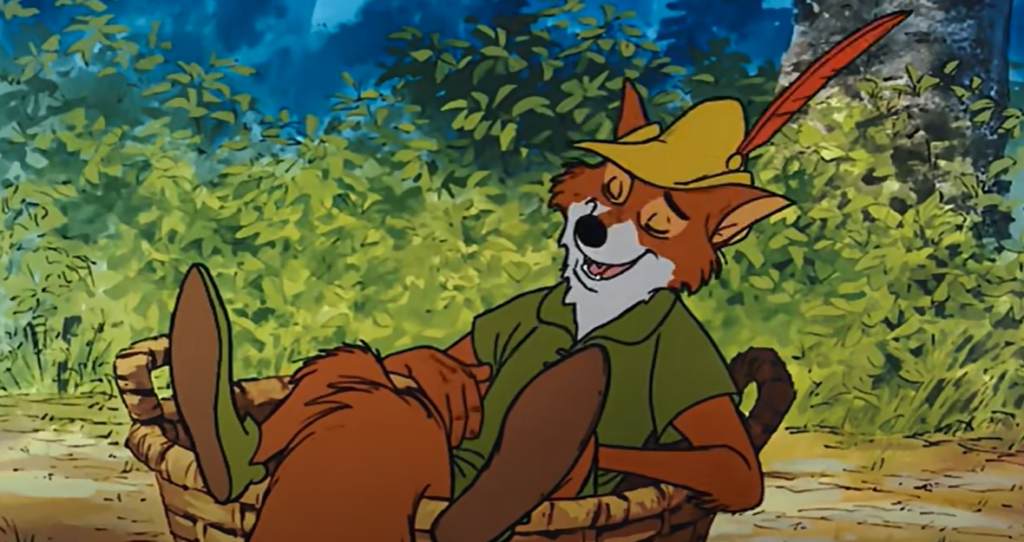
“Robin Hood,” a Disney classic released in 1973, takes a delightful and whimsical approach to the timeless tale of the heroic outlaw from English folklore. The film brings to life the adventures of Robin Hood and his band of merry anthropomorphic animals in a charming and humorous manner, leaving a lasting impression on audiences of all ages.
Anthropomorphic Characters
One of the film’s standout features is its anthropomorphic representation of the characters. Instead of traditional human portrayals, the characters are charmingly depicted as animals, adding an endearing layer of whimsy to the narrative. Robin Hood, the charismatic and cunning protagonist, is depicted as a swift and clever fox, embodying the traits of his human counterpart. Similarly, Maid Marian, Robin Hood’s love interest, is portrayed as a beautiful and graceful vixen, capturing the essence of her character from folklore.
The choice of animal characters goes beyond mere aesthetics, as their traits and personalities often mirror those of their human counterparts, further enriching the storytelling experience. This clever casting decision breathes new life into the classic tale and makes it a truly unique and memorable adaptation.
Disney’s Animation Style
“Robin Hood” showcases quintessential Disney animation, characterized by fluid movements, vibrant colors, and expressive characters. The animation brings a lively and dynamic quality to the film, capturing the essence of the medieval setting and the excitement of the adventurous plot.
The animators masterfully infuse human-like characteristics and emotions into the animal characters, creating relatable and lovable figures. From the mischievous grin on Robin Hood’s face to the elegance in Maid Marian’s movements, the attention to detail in the animation elevates the film to a visual delight.
Enchanting Musical Score
A hallmark of Disney’s animated classics is their memorable musical scores, and “Robin Hood” is no exception. The film boasts a delightful array of catchy tunes and heartfelt lyrics that enhance the emotional impact of the story. Songs like “Oo-De-Lally” bring a joyful and carefree energy, perfectly encapsulating Robin Hood’s adventurous spirit.
“The Phony King of England” is a rollicking, foot-tapping number that adds humor and liveliness to the narrative. Moreover, “Love” serves as a touching and romantic interlude, beautifully expressing the growing affection between Robin Hood and Maid Marian.
| Aspect | Description |
|---|---|
| Director | Wolfgang Reitherman |
| Release Year | 1973 |
| Running Time | Approximately 83 minutes |
| Animation Style | Quintessential Disney, with fluid movements and expressive characters |
| Characters | Anthropomorphic animals, mirroring human personalities from the folklore |
| Protagonist | Robin Hood, a swift and cunning fox |
| Love Interest | Maid Marian, a beautiful and graceful vixen |
| Musical Score | Catchy tunes and memorable lyrics, enhancing emotional moments |
Charlotte’s Web (1973)
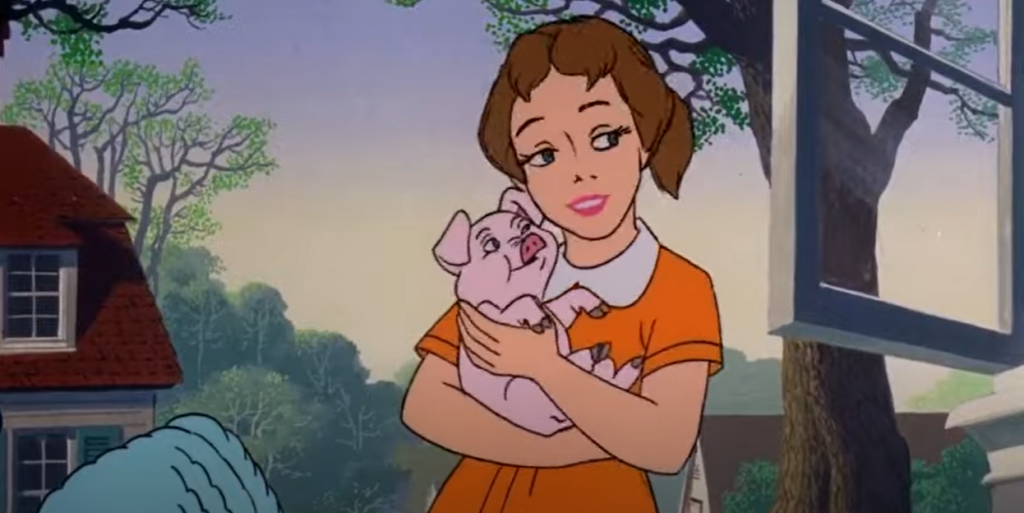
“Charlotte’s Web,” released in 1973, is a heartwarming musical drama based on E.B. White’s beloved novel. The film beautifully captures the touching tale of friendship between Wilbur, a small and vulnerable pig, and Charlotte, a wise and caring spider. Produced by the renowned Hanna-Barbera studio, the animation style and compelling storytelling elevate this classic to a memorable and emotionally resonant cinematic experience.
Animated Imagery
Hanna-Barbera’s animation expertise shines through in “Charlotte’s Web.” The film brings the vivid imagery of E.B. White’s rural world comes to life, immersing viewers in the charm and beauty of the countryside. The attention to detail in each frame is evident, making the film visually captivating and enchanting.
Wilbur, the endearing runt pig, is portrayed with childlike innocence and vulnerability, making him instantly relatable to the audience. Charlotte, the wise and nurturing spider, is depicted with a delicate grace that showcases her caring and compassionate nature. The contrast between these two characters creates a dynamic and heartwarming connection that forms the emotional core of the film.
| Aspect | Description |
|---|---|
| Directors | Charles A. Nichols, Iwao Takamoto |
| Release Year | 1973 |
| Running Time | Approximately 94 minutes |
| Animation Style | Distinct and captivating, bringing rural imagery to life |
| Protagonist | Wilbur, an endearing and vulnerable runt pig |
| Friend | Charlotte, a wise and caring spider |
| Themes | Friendship, Loss, Life and Death |
Themes of Friendship and Loss
At its heart, “Charlotte’s Web” is a poignant exploration of friendship and the emotional impact of loss. The genuine and heartfelt bond between Wilbur and Charlotte serves as a powerful reminder of the value of true companionship. Their unwavering support for each other in times of adversity resonates deeply with audiences, leaving a lasting impression.
The film also delicately handles the theme of loss and mortality, as Charlotte endeavors to save Wilbur from an untimely fate. Her selflessness and wisdom serve as a source of inspiration, teaching valuable life lessons about courage, love, and the inevitability of change.
Enchanting Soundtrack
The film’s soundtrack plays a crucial role in enhancing the emotional impact of the narrative. The title song, “Charlotte’s Web,” performed by the talented Debbie Reynolds, beautifully captures the essence of the story. Its touching lyrics and soulful melody poignantly convey the themes of friendship, selflessness, and the bittersweet nature of life and death.
In addition to the title song, the film features a selection of other memorable tunes that add depth and emotion to the storytelling. The musical elements create a captivating and immersive experience for the audience, making “Charlotte’s Web” an unforgettable journey through the power of song.
Watership Down (1978)
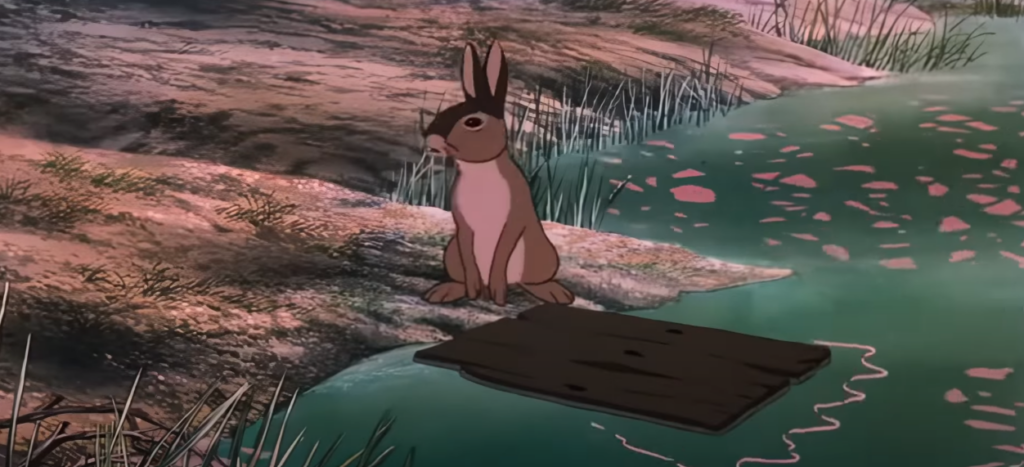
“Watership Down,” a 1978 animated film, made a profound impact on the world of animation with its gripping and mature storytelling. Adapted from Richard Adams’ novel of the same name, the movie follows a group of rabbits on a perilous journey to find a new home after their warren is destroyed. The film’s realistic character designs and scenic backgrounds add to its visual aesthetic, capturing both the beauty and harshness of nature. “Watership Down” is far removed from the usual light-hearted fare of animated films, exploring themes of survival, leadership, and the strength of community.
Realistic Visual Aesthetic
“Watership Down” stands out for its visually captivating style, with realistic character designs and scenic backgrounds. The animation meticulously portrays the natural world, bringing it to life with stunning attention to detail. This realism adds depth and authenticity to the film, making it a visual treat for audiences.
The contrasting beauty and harshness of nature are expertly captured, as the rabbits embark on their perilous journey through fields, forests, and dangerous territories. The film’s animation allows viewers to immerse themselves in the rabbits’ world, evoking a sense of wonder and danger at every turn.
| Aspect | Description |
|---|---|
| Director | Martin Rosen |
| Release Year | 1978 |
| Running Time | Approximately 101 minutes |
| Visual Aesthetic | Realistic character designs and scenic backgrounds, capturing the beauty and harshness of nature |
| Main Characters | Hazel, Fiver, Bigwig, and others, exhibiting human emotions and experiences |
| Themes | Survival, Leadership, Community |
Gripping Tale of Survival
At its core, “Watership Down” is a gripping tale of survival, depicting the challenges and dangers faced by the group of rabbits on their quest for a new home. The film fearlessly delves into the harsh realities of nature, exploring themes of vulnerability and resilience. As the rabbits encounter predators, environmental threats, and internal conflicts, their journey becomes a testament to the strength of the human spirit, even in the form of anthropomorphic rabbits.
Mature Themes and Ground-breaking Animation
“Watership Down” set new standards for animated films by exploring mature themes and occasionally graphic imagery. The movie tackled complex subjects such as death, war, and the struggle for survival, making it a thought-provoking and emotionally impactful experience.
This departure from the usual lightheartedness of animated films was groundbreaking, demonstrating that animation could be a powerful medium for storytelling aimed at older audiences. “Watership Down” challenged the notion that animation was solely for children, earning its place as a mature and respected work of art in the realm of animation.
Nuanced and Relatable Characters
The film’s characters are well-crafted, each exhibiting distinctive traits and dealing with their own fears and aspirations. Despite being anthropomorphic rabbits, they display a wide range of human emotions and experiences, making them relatable and compelling figures.
Hazel, the protagonist, portrays strong leadership qualities and compassion, guiding the group through their challenging journey. Fiver’s sensitivity and foresight make him a crucial figure in their quest. Bigwig’s bravery and loyalty stand out as essential qualities in their struggle for survival. Each character’s development adds depth to the narrative, making “Watership Down” a memorable and emotionally engaging cinematic experience.
Impact and Legacy: The 70s Animation Revolution
The 1970s were a pivotal time for the animation industry, with the period witnessing drastic changes in storytelling and animation techniques. This shift from traditional, fairy-tale narratives to more complex, mature themes saw a revolution that left a lasting legacy.
Animation Techniques: A Leap Towards Realism
The 1970s introduced innovative techniques that greatly enriched the visual style of animation. Notably, the use of rotoscoping – a method where animators traced over motion picture footage – surged in popularity. The application of these advanced methods resulted in animations with an unprecedented level of realism.
| Animation Techniques | Impact |
|---|---|
| Rotoscoping | Enhanced depth and realism in animated sequences |
| Layering | Provided a 3D perspective in 2D animation |
| Computer-assisted animation | Increased efficiency and precision in the animation process |
Societal Influence: Reflection of the Times
The changes in societal, cultural, and political landscapes greatly influenced the themes and narratives of the animations produced during the 1970s. This period’s animation saw an emphasis on presenting reality, which was significantly different from the fantastical narratives of the earlier periods.
- Heavy Traffic: This animation stood out for its depiction of urban decay and societal struggles, reflecting the period’s tumultuous reality;
- Watership Down: This film presented environmental and leadership concerns, a response to the growing environmental movement and political uncertainty.
Animation Industry: Changes and Innovations
The 1970s also brought about major changes in the animation industry. A significant shift was seen in the industry’s approach to audience targeting, moving from purely children-oriented content to a broader audience base. Moreover, the rise of independent studios marked a departure from the domination of major production companies, allowing more creative freedom and experimentation.
| Industry Changes | Impact |
|---|---|
| Audience diversification | Expanded the reach of animation to a wider demographic |
| Rise of independent studios | Increased diversity and creativity in animation content |
Legacy: Lasting Influence
The 70s animation revolution has left a significant legacy that has continued to shape the industry in several ways.
- Mature Themes: The shift towards mature, real-world themes paved the way for future animations to explore a wide range of narratives;
- Innovative Techniques: Techniques such as rotoscoping, introduced in the 70s, continue to be used and developed today;
- Audience Diversity: The move towards targeting a wider audience base has resulted in a broader scope of animation content, attracting viewers of all ages and interests.
Conclusion
The cartoon movies of the 70s marked a revolution in the animation industry. These films, with their diverse themes, innovative techniques, and captivating narratives, redefined the boundaries of what animation could achieve. Their legacy continues to influence the world of animation today, underscoring their timeless appeal.
FAQ
The 70s was a transformative decade for animation. It saw the rise of adult animation, experimentation with new techniques, and exploration of diverse themes, which expanded the genre’s scope and appeal. It also saw increased competition for Disney, with studios like Hanna-Barbera and Bakshi Productions coming into prominence.
The societal changes of the 70s greatly influenced the themes and narratives of cartoon movies. This decade witnessed significant shifts in cultural, political, and social norms, which were reflected in the issues addressed in these films. For instance, Heavy Traffic highlighted urban decay and societal struggles, while Watership Down depicted themes of survival, leadership, and environmental concerns.
The 70s saw several innovations in animation techniques. One notable example is rotoscoping, a process where animators traced over live-action footage, frame by frame. This technique was prominently used in movies like Heavy Traffic, enhancing the realism and visual appeal of the animation.

